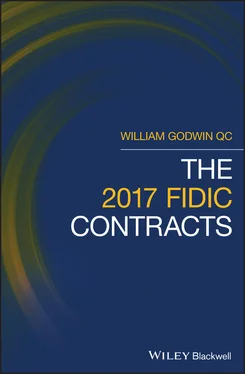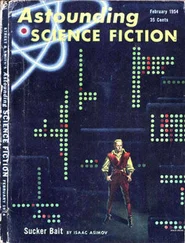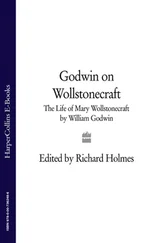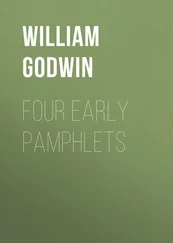1 ...6 7 8 10 11 12 ...18 Particularly helpful is the guidance on the contents of the Employer's Requirements in the case of the Yellow and Silver Books. FIDIC also places more emphasis in the 2017 notes on the need for the tender documents to be prepared by suitably qualified engineers who are not only familiar with the technical aspects of the required works but also the particular requirements and contractual provisions of a design‐build project (in the case of the Yellow and Silver Books) or a construction project (in the case of the Red) and recommends a review by suitably qualified lawyers. The notes also refer to FIDIC's intention to update the FIDIC Procurement Procedures Guide, planned for publication at a later date, to provide guidance on the content and format of the tender documents issued to tenderers specifically by reference to the 2017 editions.
The FIDIC Guidance gives options for various sub‐clauses, with in some cases example wording and in others notes and suggestions. These are set out in the Notes on the Preparation of Special Provisions forming part of the Guidance. They are well worth taking into account.
The notes on definitions (clause 1.1), for example, give some useful warnings about how any changes to the definitions may well have serious consequences for the interpretation of the Contract documents and should not generally be made, but go on to give specific instances where some definitions, such as the Base Date, might be usefully amended, or where the site crosses the border between two countries.
Example wording is provided under clause 1.15, for example, dealing with limitation of liability where parties wish to take into account liabilities which are to be insured under clause 19 and so provide for specific liability by reference to each potential head of damage. Other examples concern notes on Provisional Sums (clause 13.4), formulae for adjustments for changes in cost (clause 13.7) and notes on Schedules of Payments (clause 14.4) and financing arrangements, with example wording.
1.5.6 Building Information Modelling
The 2017 editions also include as part of the Guidance at the back of each form advisory notes on the use of FIDIC Contracts where the project uses Building Information Modelling (BIM) systems, with guidance given on specific clauses of the general conditions needing review when the Particular Conditions are drafted. FIDIC anticipates more detailed guidance being necessary and accordingly intends to publish a ‘Technology Guide’ and a ‘Definition of Scope Guideline Specific to BIM’ at a later date.
As in the 1999 editions, the back of the 2017 Books contains example forms, in particular forms of required securities (such as an advance payment guarantee), forms of letter of tender, letter of acceptance and contract agreement for the Red and Yellow Books, or letter of tender and contract agreement for the Silver Book, and in each case a form of dispute avoidance/adjudication agreement.
1 1The Base Date is defined in clause 1 of both editions of all three Books as 28 days before the latest date for submission of the tender.
2 2‘Unforeseeable’ is defined in clause 1 of the three 2017 Books to mean ‘not reasonably foreseeable by an experienced contractor by the Base Date’.
3 3In the 1999 Red Book (clause 4.1), where the Contractor is, under the Contract, to design any part of the works then that part when completed must be fit for such purposes as those for which the part is intended as specified in the Contract. In the 2017 edition, the purposes are to be as specified in the Contract or, where they are not so defined and described, their ordinary purposes.
4 4See Section 5.1.4 for a fuller discussion of errors in Employer's Requirements in the Yellow Book.
5 5See Section 13.2.1 .
6 6The 2008 Gold Book had introduced a fitness for purpose indemnity in the second paragraph of clause 17.9. This indemnity, as in the pre‐release Yellow Book, is excluded from the general exclusion of indirect or consequential loss in clause 17.8 of the Gold Book; but is within the overall liability cap (second paragraph of clause 17.8). The pre‐release Yellow Book thus followed the Gold Book in introducing a Contractor's fitness for purpose indemnity, but went beyond it by excluding the indemnity from both the indirect loss exclusion and the overall liability cap.
7 7See Section 2.8.2.
8 8See Section 2.8.
9 9See Section 12.1.3 .
10 10See Section 7.6 .
11 11See Section 9.2 .
12 12See Section 13.1.3 .
13 13See Section 13.2.3 .
14 14See Section 12.2.2 .
15 15See Section 9.4 below.
16 16See Section 11.3.1 .
17 17See Section 11.4.1 .
2 Key General Provisions
2.1 Definitions
Clause 1 of the 2017 forms contains a number of general provisions, beginning with a list of definitions at clause 1.1 and continuing with further definitions at 1.2, under the heading ‘Interpretation’, of various expressions such as ‘written’ or ‘in writing’, ‘may’ and ‘shall’ together with general guidance on interpreting the Contract, such as that words indicating one gender include all genders.
The definitions at clause 1.1 are listed alphabetically rather than, as in the 1999 editions, under various subject matter headings, and give the meanings of predominantly the nouns‐with‐initial‐capitals which figure throughout the Contracts, such as ‘Works’, ‘Materials’ and ‘Review’. As with the 1999 editions, wherever an expression has an initial capital in the body of the Contract it is a defined expression, the definition appearing in clause 1.1.
2.2 Notices and Other Communications
One of the most important general provisions in the 2017 editions is that dealing with notices and other communications in clause 1.3. ‘Notice’ is defined in clause 1.1 of the 2017 contracts to mean a written communication identified as a notice and issued in accordance with clause 1.3. Clause 1.3 of the 1999 editions also contains rules about formal communications under the Contract such as notices, but the 2017 rules are more detailed and require particular attention in view of the greater use of notices and associated time limits in the 2017 editions.
Clause 1.3 in the 2017 contracts requires that any notice to be given under the Contract, or the issuing, providing, sending or the like of other communications (including, for example, determinations or instructions) should be in writing, and either:
1 (a) a paper‐original signed by an authorised representative, such as the Contractor's Representative or the Engineer; or
2 (b) an electronic original generated from a system stated in the Contract Data, 1 or acceptable to the Engineer (or in the Silver Book, the Employer); the electronic original must moreover be transmitted by the electronic address uniquely assigned to the authorised representative.
Further, if it is a notice, the communication must be identified as a notice. If it is another form of communication, it has to be identified as such and include reference to the provision of the Contract under which it is issued, where appropriate.
Other requirements for communications including notices are that they must be delivered, sent or transmitted to the address for the recipient's communications stated in the Contract Data (or to a notified changed address) and that they should not be unreasonably withheld or delayed.
An important additional provision concerns variation instructions. Clause 3.5 of the 2017 Red and Yellow Books and 3.4 of the 2017 Silver Book require that before clause 13.3.1 – dealing with variations by instruction – shall apply, the communication containing the instruction has to state that it constitutes a variation; otherwise, a procedure of notices and counter‐notices, set out in clause 3.5/3.7, is triggered, with the intention of flushing out the issue whether an instruction constitutes a variation at an early stage rather than deferring that question to later. The new variation procedure under the 2017 editions is examined in Chapter 11.
Читать дальше












